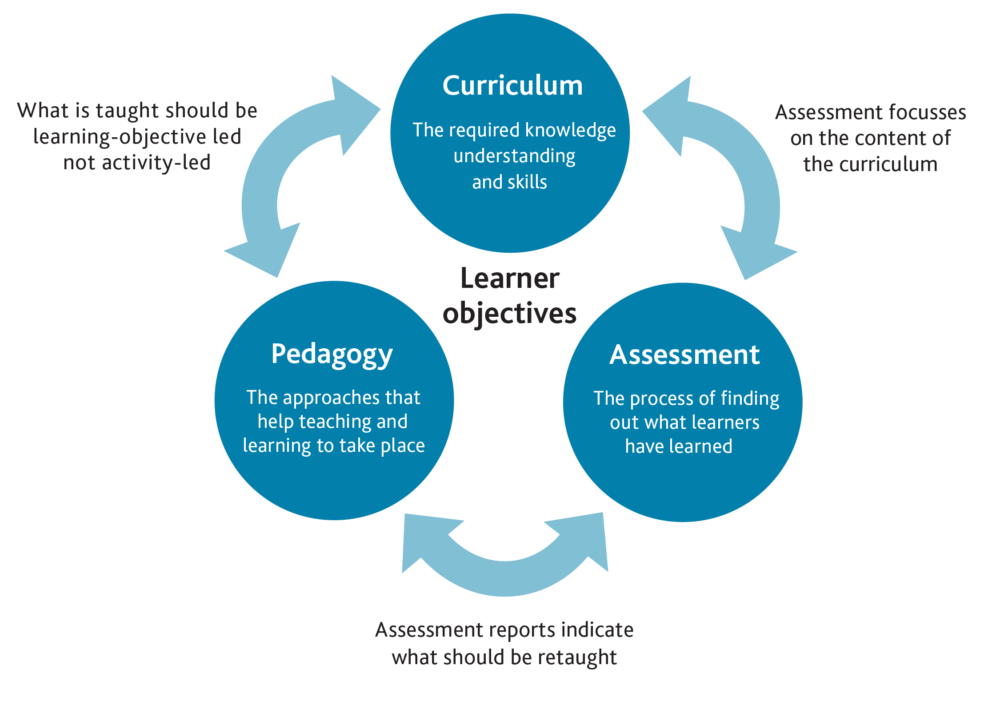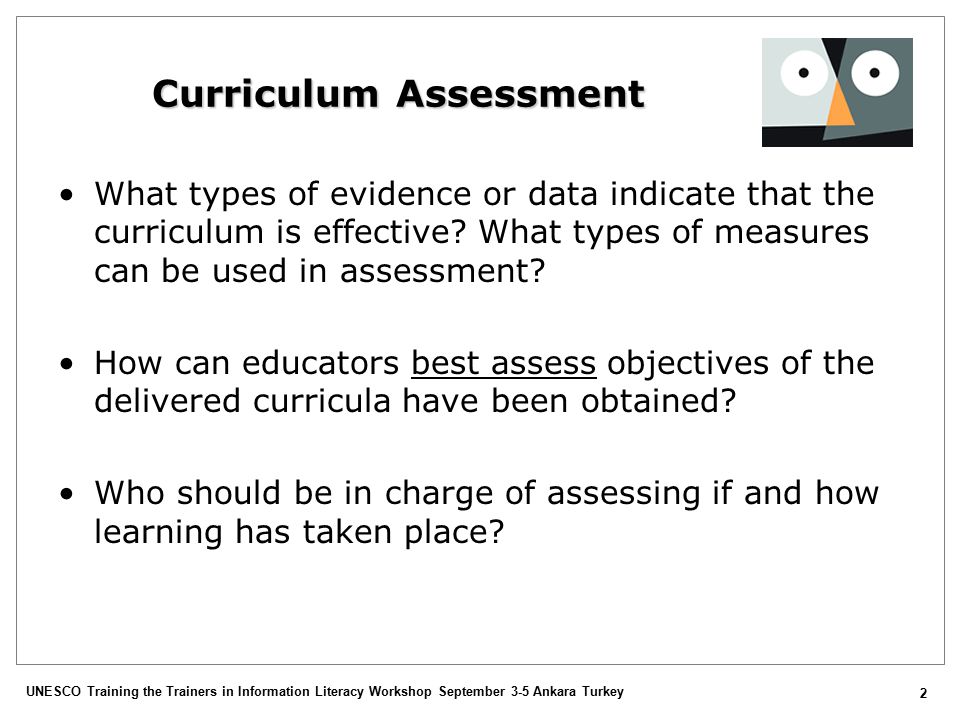Explain the Different Ways of Assessing the Curriculum
The context of the curriculum The design of the curriculum Curriculum development Curriculum Context This refers to the curriculum milieu or the physical economic and social setting in which the curriculum is designed developed and implemented Shiundu and Omulando 1992 so as. 46 A Whole-School Appoach to Curriculum Development.

Describing Coherence Of Curriculum Pedagogy And Assessment Cambridge Assessment International Education
Assessment is thus an important part of the teaching process.

. Just imagine trying to teach each day in a lecture hall or K-12 classroom without a plan in place. Schools may try to improve curriculum quality by bringing teaching activities and course expectations into alignment with learning standards and other school coursesa practice sometimes called curriculum mapping The basic idea is to create a more consistent and coherent academic program by making sure that teachers teach the most. This research allows a curriculum committee to identify key issues and trends that will support the needs assessment that should be conducted and the philosophy that should be developed.
Why bother assessing curriculum. Curriculum viewed in this way is a historical document. Below are 8 different types of ways that teachers can use to assess student progress in an inclusive class.
Integrated these two models offer a conceptual way to reconsider how to organize learning outcomes and program assessment. Formative assessment or assessment for learning is what teachers do in their classrooms to gather information about how students are learning. In the ways and to the extent that they are different.
There are different ways of approaching the assessment of childrens learning. Curriculum assessment can serve several major purposes. Read a question or statement and have students go to the corner of the room that represents their answer.
Four Corners is another fantastic activity for getting kids up and moving while also assessing their knowledge. In many ways the need for curriculum development is self-evident. Assessment in the EYFS is of two main types on-going assessment which is what practitioners do on a daily basis to make decisions about what the child has learned or can do already so as to help the child move on in their learning this is sometimes called formative assessment because it informs the next steps that are planned with the child and the parent.
This perhaps predictably has caused some school leaders to panic and insist that planning documents be rewritten taking the three Is into account massively adding to teachers workload and stress. It can be formal like a quiz or informal such as. To ensure the quality of education schools should be actively involved in curriculum development and implementation.
A thoughtfully developed curriculum provides educators with a useful framework to. Curriculum Development Stages Useful to Assessment Intentionality is a critical component in the curriculum development model Understanding by Design UbD created by McTighe and Wiggins 2005 2011. As a discipline curriculum has three main sets that form its structure.
The curriculum is the districts bet that. In an effort to assist schools in assessing the quality of their curriculum Ofsted has divided matters into three baskets. Each type of assessment holds a certain weight in the overall grade.
Both are valid ways of assess-. When calculating a final grade for report cards teachers use student assignments tests quizzes and exams collected over the semester. At times you will need to do focused and purposeful observations so that you can assess a par-ticular area of a childs learning.
461 Step to be Taken in Curriculum Development. The ideas presented here are based on the work of Maker Nielson in Curriculum Development and Teaching Strategies for Gifted Learners. The curriculum being used now is what the district has decided is the best of the past.
Any curriculum development process involves research that reviews recent issues and trends of the discipline both within the district and across the nation. The papers represent different perspectives on learning outcomes. Curriculum assessment is a process of gathering and analyzing information from multiple sources in order to improve student learning in sustainable ways.
You first begin with curriculum from which you can base your syllabuses on. Curriculum development involves the following steps. The papers represent the views of the individual author.
At other times your observation will be open and fluid and you will assess what emerges from the observation. Assessments can inform instruction. Critics of learning outcomes approaches have also been commissioned to provide their perspectives.
Within the curriculum you show the following. Curriculum is the container that holds the institutional knowledge of what was the best of past instruction. 1 Differentiated Curriculum For All and For High Ability Learners.
Intent implementation and impact. Situation analysislearning outcomes related tasks assessment methods assessment instruments bench-marking of assessment criteria assessment criteria marks distribution description of courses and reference materials. Curriculum is also a plan for the present.
The kind of learning outcomes included in curriculum and assessment specifications across these sectors. In the ways and to the extent students are similar Their curriculum should be similar. Label each corner of the room with a different option such as strongly agree agree disagree strongly disagree or A B C and D.

Assess For Success Diagram On Different Assessments And Purposes All Important Mrso Classroom Assessment Teacher Observation Checklist Teacher Observation


No comments for "Explain the Different Ways of Assessing the Curriculum"
Post a Comment